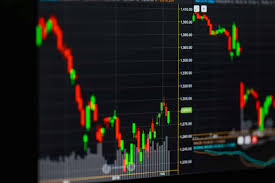Forex trading strategies are essential tools for traders looking to navigate the complex world of currency exchange. As a trader in foreign exchange, understanding various strategies can significantly affect your success rates. To facilitate learning and methodology, many traders opt for downloadable resources. In this article, we’ll explore the importance of Forex trading strategies and provide insights into effective techniques. For traders in Morocco, relevant information can be found at forex trading strategies pdf Trading Brokers in Morocco.
Understanding Forex Trading Strategies
Forex trading is not just about buying and selling currencies; it encompasses a variety of strategies and techniques that can enhance your ability to make profitable trades. A Forex trading strategy is a predefined method you can use to make informed trading decisions based on the currency market’s performance. The key components of any successful strategy involve a thorough understanding of the market dynamics, solid risk management, and a clear trading plan.
The Importance of Having a Trading Strategy
A well-defined Forex trading strategy is essential for several reasons:
- Consistency: A strategy provides a consistent approach to trading, helping you stay disciplined and focused.
- Minimizes Emotional Trading: By following a set plan, you are less likely to make impulsive decisions that can lead to losses.
- Risk Management: Good strategies include risk management techniques that protect your capital from significant losses.
- Market Understanding: Developing a strategy forces you to study and understand market trends, patterns, and economic indicators.
Types of Forex Trading Strategies
There are many different strategies Forex traders may employ; here are a few of the most common:
1. Scalping
Scalping is a short-term strategy aimed at making small profits from minor price changes. Scalpers typically enter and exit trades quickly, sometimes holding positions for just a few seconds or minutes. This requires quick decision-making and intense focus on price action.
2. Day Trading
Day trading involves opening and closing trades within the same trading day. Day traders do not hold positions overnight, which helps minimize risks associated with overnight market fluctuations. This strategy often requires a deep understanding of the market and strong technical analysis skills.
3. Swing Trading
Swing trading aims to capture price swings in the market. Traders will hold positions for several days or even weeks, looking to profit from anticipated market movement. This strategy generally necessitates a good grasp of technical analysis and a strong risk management strategy.
4. Position Trading

Position trading is a long-term strategy where traders hold onto their positions for weeks, months, or even years. This approach relies on fundamental analysis, as traders look for significant shifts in economic indicators and long-term trends in the currency market.
Building Your Forex Trading Strategy
Creating a customized Forex trading strategy requires careful consideration and a systematic approach. Here are some steps to help you build an effective strategy:
1. Define Your Goals
Start by determining what you want to achieve with your trading. Are you looking to generate a supplementary income, or do you aim to become a full-time trader? Your goals will influence your risk tolerance and strategy choice.
2. Analyze Your Risk Tolerance
Every trader has a different level of risk tolerance. Understanding your comfort with risk will help you assess the most suitable trading strategies and alert you to stay within your limits.
3. Choose a Trading Style
Select a trading style that suits your personality, time availability, and market understanding. Experiment with different styles to find what works best for you.
4. Use Technical and Fundamental Analysis
Incorporate both technical indicators and fundamental analysis into your strategy. While technical analysis focuses on price movements and trends, fundamental analysis examines economic reports and news to predict currency movements.
5. Backtest Your Strategy
Before implementing your strategy in real-time trading, backtest it with historical data. This process will help you understand its potential effectiveness and make any necessary adjustments.
Conclusion
Forex trading strategies are vital for anyone who seeks to navigate the currency market successfully. By tailoring a strategy to your trading style, risk tolerance, and personal goals, you can improve your chances of making profitable trades. Resources such as PDFs on Forex trading strategies can provide valuable insights and methodologies to refine your skills. Explore various strategies and find what works best for you, remembering that discipline and risk management are key to trading success.
